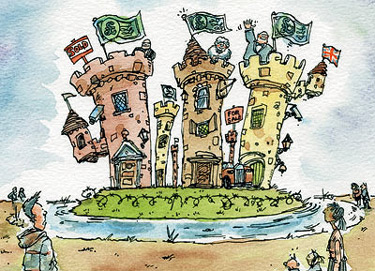
The drastic drop in oil prices could put downward pressure on mortgage rates.
The U.S. Energy Information Administration reported that the price of regular gasoline was $2.20 per gallon, its lowest point since a peak of $4 per gallon in May 2011. EIA estimates that the savings could amount to $550 per household in 2015.
It might not all be good news:Lower Oil Prices Could Stall Home Appreciation
“Lower oil prices mean a lower inflation rate, which pushes down mortgage rates,” economists note at the National Association of REALTORS®‘ Economists’ Outlook blog. Indeed, the 30-year fixed-rate mortgage averaged 3.73 percent last week — the lowest average in 20 months — according to Freddie Mac’s weekly mortgage market survey. Taking into account the median home price of $205,300, a 0.75 percentage point drop in mortgage rates could yield a savings of about $1,000 annually, according to NAR researchers.
“What this means for REALTORS®: The decline in oil prices is generally positive to households by way of the gas savings and lower mortgage payments,” economists note. “That savings will boost consumer spending in other areas. But there may be some layoffs in oil-producing states.”
The lower oil prices may prompt revenues to flatten out in some oil-boom areas, notably North Dakota and Texas.
Still, the overall impact to national employment likely will be minimal, since most of the employment growth is coming from many economic sectors. Those employed in oil and gas extraction represent just 0.14 percent of the U.S.’s 138 million workers, according to data from the Bureau of Labor Statistics. Most state economies are diversified enough, too. Even in Texas, which is the biggest state for oil production and accounts for about half of U.S. oil and gas extraction workers, the oil industry covers less than 1 percent of its workers.
That said, some smaller counties may feel the impact more, since they do have higher employment in the oil sector. Those counties include Washington County, Okla.; Upton County, Texas; Woods County, Okla.; Crockett County, Texas; Hutchinson County, Texas; Yoakum County, Texas; and Gilmer County, W. Va.
Source: “Recent Oil Trends and What They Mean for the Housing Recovery,” National Association of REALTORS® Economists’ Outlook Blog (Jan. 12, 2015)
Live in Nevada County? Call or fill out the form below
for a your free home market analysis’
John J. O’Dell Realtor® GRI
O’Dell Realty
(530) 263-1091
BRE#00669941
Error: Contact form not found.








